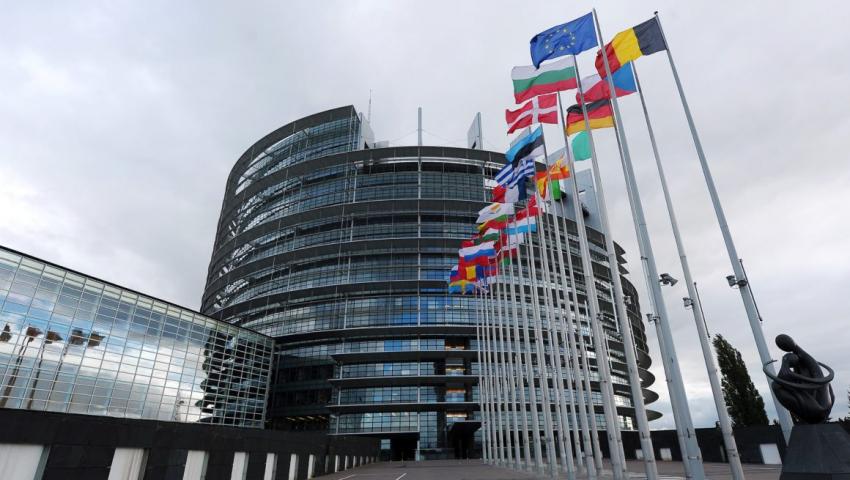EP energy committee backs use of low-emission hydrogen, but MEPs remain silent on nuclear energy

The European Parliament's Committee on Industry and Energy has adopted a resolution in support of hydrogen produced from 'low-carbon' energy sources, including carbon-rich fossil gases. The resolution even briefly mentions nuclear energy as a potential energy source. Parliament's draft resolution on the European Commission's hydrogen strategy, tabled in July 2020, encourages the use of low-carbon hydrogen in the short and medium term as a way to develop the market, recalls Euractiv.
The EU needs to "develop a sustainable hydrogen economy that aims to make pure hydrogen competitive as soon as possible," the draft resolution said, with 46 votes in favor, 25 against and 5 abstentions. The development of renewable hydrogen should be encouraged along the way in the next ten to fifteen years, said Jens Geier, a German Socialist and Democrat (S&D) MEP who co-authored the draft resolution.
"I really can't say how long blue hydrogen has been used because I'm not a prophet. It depends on many circumstances, we can influence politically only to a certain extent, "he told the European edition. The so-called "blue" hydrogen is obtained by capturing CO2 emissions from the use of natural gas and storing emissions underground.
According to the European Commission's hydrogen strategy, this is considered a "low-carbon" way of producing hydrogen, along with "electricity-based hydrogen", when the energy sources are low-carbon. The draft resolution will be submitted to the European Parliament for a plenary vote in April.
In Parliament, the center-right European People's Party (EPP) also supports the creation of a hydrogen market using low-carbon energy sources. "Greens and the left do not believe that low-carbon hydrogen should be included in the hydrogen strategy, but that its introduction we need to focus exclusively on renewable hydrogen, "said Angelica Niebler, EPP spokeswoman for the hydrogen strategy. "We are strongly opposed to this. "We believe that in order to develop a hydrogen market, we need low-carbon hydrogen as a bonding technology," she said.
WWF and the climate think tank Sandbag have warned that the report is "risky" as it makes low-carbon hydrogen eligible for public funding and political support. "The European Parliament had the opportunity to present a vision for the effective, strategic development of hydrogen, but they wasted it," said Imke Lubeke, head of climate and energy at WWF's European Policy Office.
"The regressive themes of Parliament's debate reflect the worrying trend of promoting hydrogen in all its forms, for all uses, without considering what other more efficient options exist and whether a hydrogen application makes sense in the wider context of energy decarbonisation. system, ”said Adrien Asos of Sandbag.
However, environmentalists were pleased to see MEPs wary of mixing hydrogen with fossil gases in pipelines, despite strong lobbying from industry.
Nuclear energy is avoided as a topic
The report promotes technology neutrality, which means it does not promote any technology, but allows the market to decide instead, Niebler told the paper. However, the report ceases to mention nuclear energy as a low-carbon energy source, while citing carbon capture, recovery and storage (CCUS), although both are considered low-carbon. Nuclear energy is also not mentioned in a text on hydrogen voted in Parliament's Environment Committee in January, and the reason is the political sensitivity of the topic.
In this case, the wording was chosen because EU countries have sovereignty over their energy mix, Geier recalled. Compromise amendment "emphasizes the role that is safe for the environment", CCUS can play to achieve a "green deal" and reduce greenhouse gas emissions, adding, however, that "the EU's zero-emission economy strategy must give priority to direct reducing emissions and actions to maintain and enhance the EU's natural traps and carbon dioxide tanks ”.
CCUS is not yet available as an industrial technology. According to the report on the global state of CCS for 2019, there are only 19 CCUS facilities in operation in the world, capturing a total of 40 million tons of CO2 each year.
But the International Energy Agency suggests that “CCUS can support the rapid development of low-carbon hydrogen production to meet current and future demand for new applications in transport, industry and buildings.”
"We think we need to expand this technology - carbon capture and storage (CCS) and carbon capture and use (CCU), especially for industrial applications - so we wanted to have a positive wording," Niebler said. "If you look at the compromise we found for CCS and CCU, it shows that we see great potential in introducing and developing this technology," she added.
The report also calls for a legal classification of the different types of hydrogen, which the Commission is expected to set out in the third revision of the Renewable Energy Directive in June, and the urgent need for EU standards to overcome regulatory barriers.
It is expected to enter the plenary in April.
